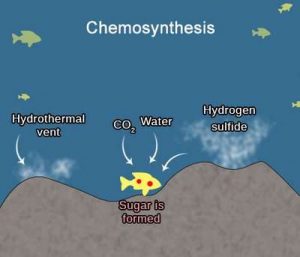What is autotrophic nutrition: Types & Autotrophic example
The Autotrophic simply means Self Nutrition, if we break the word Autotrophic and get its meaning like the word Auto means “Self” and “Trophic” means the “Nutrition”, i.e., Self-nutrition.
The simple autotrophic nutrition definition is, it is a process where the plants or organisms prepare their own foods by using inorganic materials like water, carbon dioxides and many more like in the presence of sunlight.
All the green plants keep an autotrophic mode of nutrition. By using simple inorganic materials like carbon dioxide, water, and mineral salts in the presence of sunlight Autotrophic organisms takes care of their nutrition and food.
All living organisms need energy and food to have continuous development and reproduction, autotrophic nutrition helps to get that energy and food.
Autotrophic is the type of nutrition in plants called the primary producers, as the plants synthesise their intake of food using light, carbon dioxide, and water.
What is Autotrophic Nutrition and Examples?
Autotrophic nutrition is seen in autotrophs. Autotrophs are organisms that are able of generating healthy or nutritive compounds with the help of inorganic materials.
It is the process where the organisms developed their own food from simple inorganic materials, for example, water, mineral salts, and carbon dioxide in the company of sunlight.
There are various examples of autotrophic nutrition and many of them we saw in daily life, such as green plants, wheat, grass, bacteria, seaweed, maize plant.
All the plants have their own way of autotrophic nutrition to keep making their own food. Autotrophic nutrition comes under two types:
- Photosynthesis
- Chemosynthesis

Types of Autotrophic Nutrition
Photosynthesis - Autotrophic Nutrition

For synthesizing the starch, Photosynthesis is the process of converting solar energy into chemical energy. For completing this process each part of the plant have their individual roles.
Leaves – Considered as a food factory of the plant.
Stomata – present the more inferior epidermis of the leaf which uses carbon dioxide from the air.
Roots – absorb minerals and water from the soil and send it to other parts of the plant
converting carbon dioxide and water into nutrients in the presence of sunlight is the process of photosynthesis which is used by plants, organisms, bacteria, and protists.
Leaves, Stomata, Roots are the major parts of the plants which play the important role in this process of photosynthesis.
Photosynthesis is the only source for all plants to get energy and sustain the life process.
Photosynthesis is as important as it helps to maintain the life carbon cycle between the oceans, plants, animals, and the earth.
Chemosynthesis - Autotrophic Nutrition

Some of the pants use chemical reactions to produce their own food, instead of using the energy from the light.
Generally in the absence of sunlight by deriving energy through chemical reactions, organic compounds are synthesized by living organisms.
Usually, chemosynthesis happens around the hydrothermal ducts and methane seeps in the deep sea where there is no sunlight.
Different species use different ways but generally, all chemosynthetic organisms use the energy emitted by chemical reactions to make sugar.
FAQ - What is autotrophic nutrition?
It is the mode of nutrition in which an organism needs to depend on other organisms for its food, as it cannot make its own food from simple inorganic material.
Grass, Wheat, Seaweed, Maize plant
There are two types of autotrophic nutrition namely Chemosynthesis and Photosynthesis.
No, Fungi are parasites and belong to eukaryotic organisms and they are not autotrophic.




